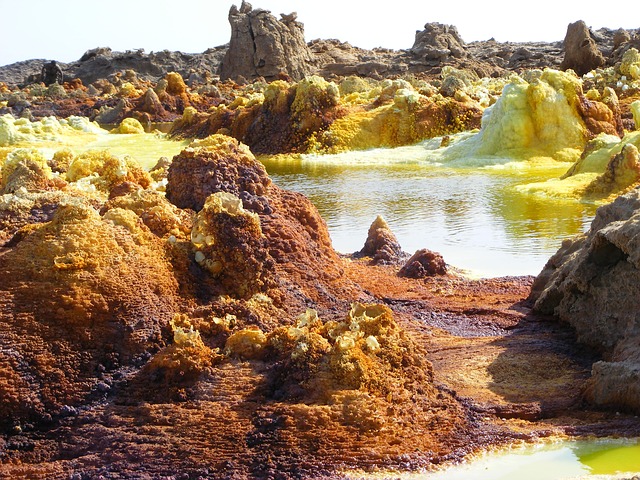Those places may be potentially dangerous to your well-being and are not recommended for mass tourists, adventure travellers, not even thinking of the women backpackers. Learn what may be the reasons and potential harms in this short article of the top 5 risky destinations around the world.
Danakil Desert, Ethiopia
Commonly known as the Danakil Depression, this desert is a contestant for the warmest destination on the globe with average temperatures of approximately 35 °C. Now, you certainly know why they call it a ‘depression’. Joke aside, the real reason for this depression to form is that the area is where three tectonic plates gather together.

Let the climate alone but the ethnic group of Cushitic peoples, a nomadic tribe, actually lives there. Besides, the burning sun, the region gets between 100 and 200 mm of rain each year. Translated into cooking terms, 100mm is about 0.2 out of the teaspoon volume. Moreover, the area is under the sea level… if the Netherlands is only about 6.7 meters below sea level, the Ethiopian desert go as low as 118.3m below than the Netherlands. You could also find lava lakes at night and ‘extremophile’ microbes.
Boa Viagem Beach, Brazil

The Boa Viagem beach coast, spread in a city of Recife, is a well-known area but also one of the most hostile places for the sun-sea-sand practitioners. Well, only if you omit the sea in this formula. For the past 10 years, 56 shark attacks occurred, half of which had a mortal result. Despite the caution signs, a Brazilian girl from San Pao is the most recent catch of the sharks. The lifeguards though passed away later.
It seems like the shark issue is the end result of the Suape port in the city, built in the late ’90s. During the construction, the estuaries of the river were drained, and long docks created. The estuaries were the area where sharks hunted and bred. Therefore, the construction of the port, lead them straight to Recife beach.
Caracas, Venezuela
There is no wonder that Venezuela is on the list, as only 17% of people living there have actually stated that they feel safe walking around the neighbourhood at night. An activity that Europeans may sometimes take for granted. Compared to the UK’s respondents in the survey, 80% claimed that they felt protected when roaming at night. The most frequent issues relate to people being either mugged or assaulted, their property/money is stolen, or locals are mistrusting the police authorities. Due to the reasons above, major investors like Coca Cola and General Motors have factories shut down, and the economy seems to be on a constant deterioration cycle.
The Kokoda And Black Cat Trails, Papua New Guinea
This trek is definitely neither for the faint heart nor for brave souls. The climate is defined by hot and humid subtropical conditions. It takes six days of hiking, climbing and swimming to complete the Black Cat track. Peculiarities of the hike include, but not limited to, dehydration, broken bones, illnesses and possible death/ kidnap by a savage tribe roaming the forests with machetes.
Skellig Islands, Ireland
The cliffs became known after the footage of the most recent Star Wars movie. Also, the island is declared a cultural heritage following the UNESCO’s protection policies. Nonetheless, the landscape views from the top and the-grass-is-always-greener steep hills may require physically fit tourists, willing to take the risk.
The ocean waves can be extremely high around this portion of land which makes it difficult to reach. Boats often deny transportation due to the strong winds and being unable to get closer to the island as the sea is always rough. This trip is definitely not recommended for people with sea-sickness.
Still, if you consider any of those destinations to visit, learn here why we take risks in our already complex lives.
